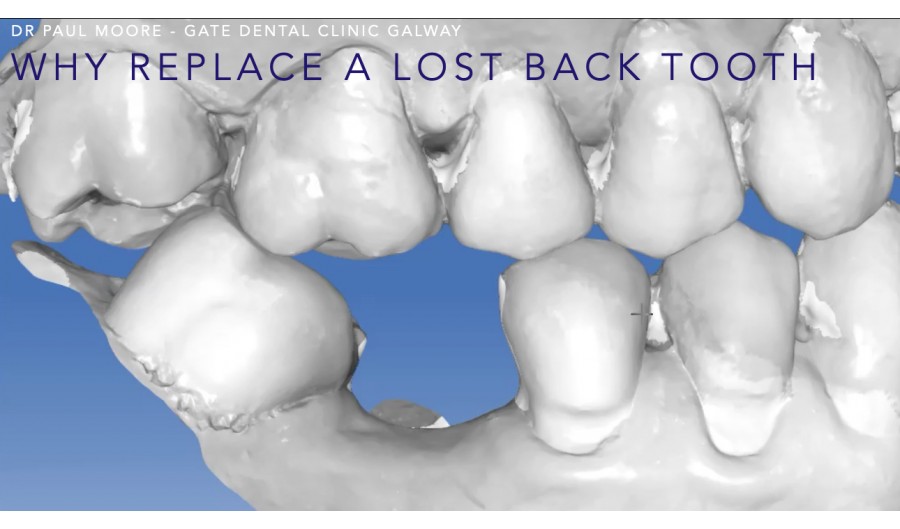Why and how should you replace a missing tooth

Every patient is unique!
Lets look at the loss of a single back tooth.
This is still fairly common and is often because of decay, fractured fillings or bone loss from gum disease. Can you live without it? Yes indeed you can, but it is a good idea and what are the implications?
Loss of any teeth will affect the blanch of your “Bite”. The way you et and chew your food. We like you to have a full compliment of front and back teeth, top and bottom, left and right. This gives you balance and allows an even distribution of biting forces and balance for you joints and muscles.
So lets look at what would happen if you leave the space:
The teeth behind will tilt and tip and sometimes rotate into the space that the missing tooth left.
The teeth infront can do likewise. The “contacts” between the remaining teeth will change and and food can lodge between them. It can be more difficult therefore to keep the gums healthy around these teeth.
The opposing teeth are no longer biting against anything and they will start “over erupting” and again change the balance of your bite.
The bone where the tooth was will shrink rapidly at first as the gum remoulds. As the bone and gums shrink it becomes more difficult to look at the options to replace the missing tooth.
The loss of biting power will mean that you put more load on all the remaining teeth. If you lose more teeth this problem becomes more compounded and this can create a “domino effect” on others.
So how can you replace the missing tooth.
Basically there are three options:
A denture. Either made of acrylic or with a precision metal frame, ( this is called a chrome cobalt denture ). This is removable, but will need to be replaced as the gums continues to shrink further over the years.
A bridge. The two teeth either side of the missing tooth are crowned and linked together with a crown in the middle. This is a fixed solution and if the two neighbouring teeth are suitable and healthy, a bridge can be a good solution providing you with both function and balance for many years. Please note not all missing teeth can be replaced or should be replaced with bridges but they can be an excellent choice in the right circumstances.
A dental implant. Without touching the neighbouring teeth a new titanium root is placed in the gap and after three to four months can be used to hold a new “abutment” ( a metal core ) and individual crown.
The dental implant should ideally be placed shortly after the extraction, although in some cases they can be placed at the same time as the extraction. If the process is delayed, it may become more difficult to place the implant as the bone shrinks and sometimes we will additionally have to create or “graft” new bone. This concept has become far more predictable nowadays, with new techniques and development is dental science, but it will also add to the cost. Like all things dental, it is always simpler, less expensive and more predictable to decide to act sooner rather than later . The implant is placed. Four months later impressions are taken sometimes with the new digital Cerec technology, then the abutments are designed and placed ready for the new tooth or teeth. .
Below is a short video of how we design these abutments:
How do we decide which is the best way to replace a missing tooth?
First your dentist will examine your mouth, your gums, your bone, your teeth and after discussion with you may ask to take some x rays or even a Cat scan to determine to options.
The you can weigh up the benefits of the choices and the procedures and costs.

4 Comment(s)
Le prix
i would like to get this
Thanks for sharing this valuable insight! The information on different replacement options for missing tooth and the process involved is really helpful, making it easier to make an informed decision about oral health.
steroids for cutting and size
Leave a Comment